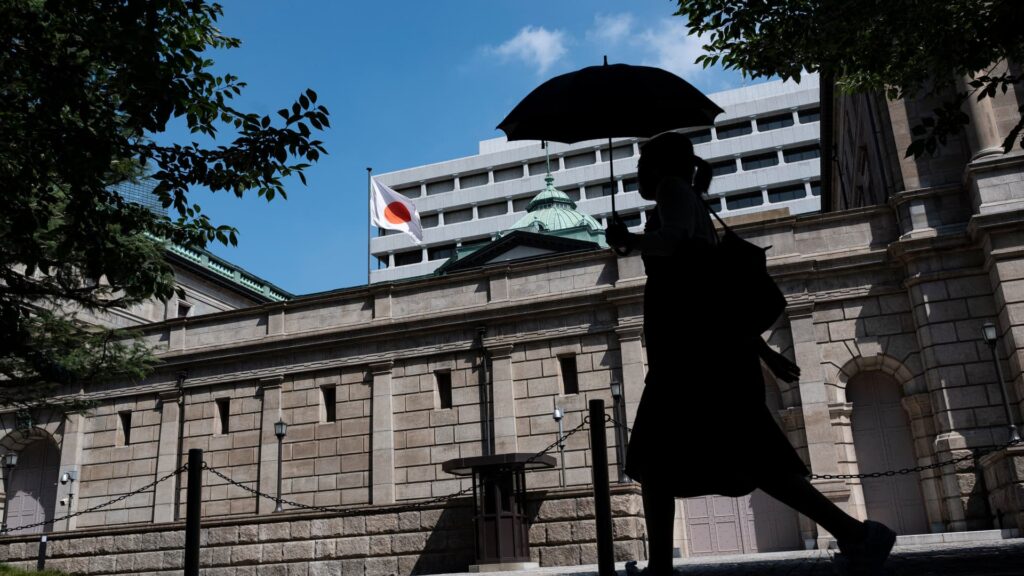]
A pedestrian walks past the Bank of Japan (BoJ) building in central Tokyo on July 28, 2023.
Richard A. Brooks | Afp | Getty Images
Japan’s central bank on Tuesday said it would slow the pace of government bond purchases from April next year, while it also held the benchmark rate at 0.5% amid rising growth risks.
The Bank of Japan, whose rate decision was in line with expectations from economists polled by Reuters, reiterated it would continue reducing its monthly purchases of Japanese government bonds by about 400 billion yen ($2.76 billion) per quarter to about 3 trillion yen until March 2026, as outlined in its plan last year.
It will then slow the cuts to 200 billion yen per quarter from April 2026 to March 2027, aiming to reach a monthly purchase amount of about 2 trillion yen.
The central bank will conduct another interim assessment at its June 2026 monetary policy meeting.
The BOJ explained that the move was aimed at improving “the functioning of the JGB markets in a manner that supports stability in the markets.”
BOJ is expected to purchase about 4.1 trillion yen of JGBs a month during the quarter ending June 2025.
While the bank has indicated it would reduce cuts to bond purchases, BOJ Governor Kazuo Ueda last week reportedly told Japan’s parliament that the central bank will continue to raise rates “once we have more conviction that underlying inflation will approach 2% or hover around that level.”
Japan’s economy faces growth uncertainty while inflation has run above the BOJ’s target for around three years.
Inflation in the country has remained high, partly due to a rice shortage, with rice prices shooting up and Japan’s government releasing emergency stockpiles prices.
The country’s headline inflation rate for April came in higher than expected at 3.5%, marking more than three years that inflation has ran above the BOJ’s 2% target.
Japan’s GDP also shrunk 0.2% in the quarter ended March compared to the preceding period as exports declined, marking the first time in a year that the economy contracted on a quarter-on-quarter basis.








